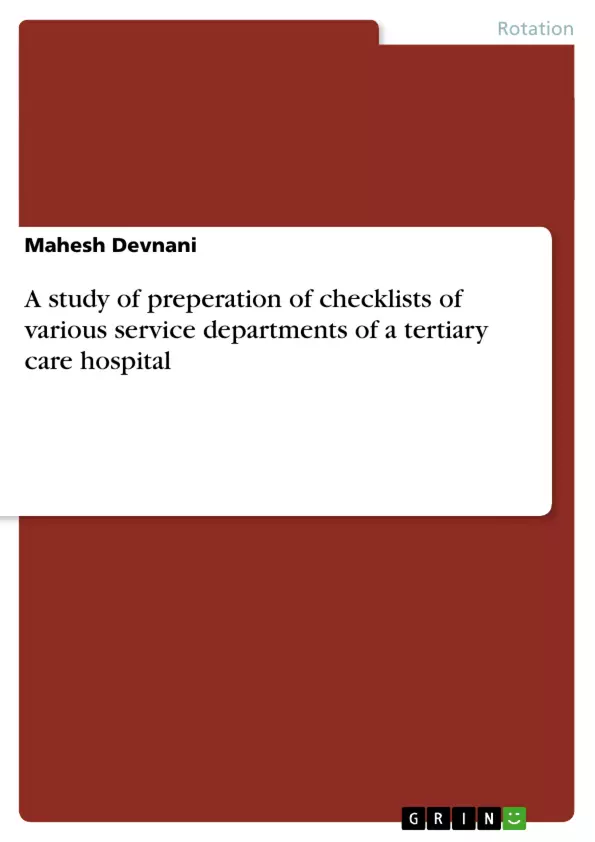Human error is inevitable—particularly under stressful conditions. It has been demonstrated that levels of cognitive function are compromised as stress and fatigue levels increase, as is often the norm in certain complex, high-intensity fields of work. This can lead to increased errors in judgment, decreased compliance with standard procedures, and decreased proficiency. An important tool in error management across all of these fields is the checklist, a key instrument in reducing the risk of costly mistakes and improving overall outcomes.
Inhaltsverzeichnis (Table of Contents)
- INTRODUCTION
- Applications
- AIM
- OBJECTIVES
- MATERIALS AND METHODS
Zielsetzung und Themenschwerpunkte (Objectives and Key Themes)
This case study aims to improve the internal control within various service departments of the Postgraduate Institute of Medical Education and Research (PGIMER) in Chandigarh, India, by developing comprehensive checklists. The study focuses on analyzing existing checklists and reports, identifying key tasks within each department, and collaborating with department supervisors to create new or modified checklists.
- Improving internal control in service departments
- Developing comprehensive checklists for various service departments
- Analyzing existing checklists and reports
- Identifying key tasks performed by each department
- Collaborating with department supervisors to create or modify checklists
Zusammenfassung der Kapitel (Chapter Summaries)
INTRODUCTION
This chapter discusses the importance of checklists in reducing human error, particularly in high-stress environments. It defines checklists as a tool to improve memory, consistency, and completeness in task execution. The chapter highlights the various applications of checklists, including error management, internal control, and quality assurance.
Applications
This section elaborates on the specific applications of checklists, showcasing their role in improving operational efficiency, reliability of reporting, and compliance with standards. It also emphasizes the use of checklists as a human factors aid, a tool for ensuring practice guideline adherence, and a valuable resource for quality assurance and risk management.
AIM
This section states the study's primary objective, which is to prepare checklists for various service departments at PGIMER to enhance internal control.
OBJECTIVES
This section outlines the specific objectives of the study, including:
- Evaluating existing checklists and reports
- Analyzing the tasks performed by various departments
- Developing new checklists in consultation with department supervisors
MATERIALS AND METHODS
This section details the methodology used in the study, outlining the analysis of existing checklists and reports, the identification of departments requiring new checklists, and the process of developing these checklists in collaboration with department supervisors.
Schlüsselwörter (Keywords)
The key terms and concepts explored in this study include checklists, internal control, service departments, healthcare, error management, quality assurance, and operational efficiency. The research focuses on practical applications of checklists in a tertiary care hospital setting to enhance the effectiveness and efficiency of various service departments.
- Quote paper
- Mahesh Devnani (Author), 2009, A study of preperation of checklists of various service departments of a tertiary care hospital, Munich, GRIN Verlag, https://www.grin.com/document/168522



